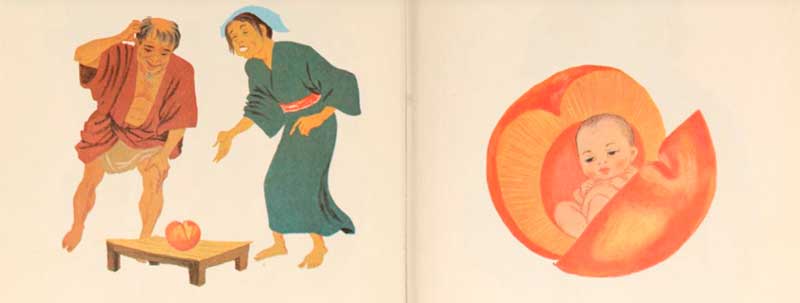"where Do Babies Come From?”: a Tale of Misunderstandings and Corporate Negligence
In a previous article we’ve discussed about ethnocentrism - “[the] technical name for this view of things in which one's own group is the center of everything, and all others are scaled and rated with reference to it.” [1] - with regard to people management, this week we’ll look at the same concept from a sales related perspective: how does ethnocentrism affect the relationship between an organisation and its customers?
Let’s consider for example Procter and Gamble’s approach to the Japanese market in the 70s, and let’s investigate the main factors that prevented Pampers diapers from becoming an instant success:
a. The chosen logo didn’t resonate with the target audience
b. Important “technicalities” - such as the average weight and size of Japanese babies - had been overlooked
c. In terms of quality, Pampers diapers were inferior to products already available from local brands
The logo:

(Image source: https://mapleleafmommy.com/family/parenting/exciting-news-from-pampers-pampersstork/)
As P&G learnt after the launch, the Western tale of storks delivering babies was unknown in Japan, where - according to traditional folklore - babies are brought by giant peaches floating down a river:
“Long, long ago there lived, an old man and an old woman; they were peasants, and had to work hard to earn their daily rice. The old man used to go and cut grass for the farmers around, and while he was gone the old woman, his wife, did the work of the house and worked in their own little rice field.
One day the old man went to the hills as usual to cut grass and the old woman took some clothes to the river to wash.
[She] at last found a nice spot by the river bank and put her basket down. As she was busy washing her clothes a great peach came bumping down the stream.
“How delicious that peach must be!” she said to herself. “I must certainly get it and take it home to my old man.”
It seemed a very long time to her to wait till her husband returned.
As soon as the old woman saw him she called out:
“O Fii San! (old man) I have been waiting for you to come home for such a long time to-day!”
“What is the matter? Why are you so impatient?” asked the old man, wondering at her unusual eagerness. “Has anything happened while I have been away?”
“Oh, no!” answered the old woman, “nothing has happened, only I have found a nice present for you!”
“This is indeed the largest peach I have ever seen! Wherever did you buy it?”
“I did not buy it,” answered the old woman. “I found it in the river where I was washing.”
“I am very glad that you have found it. Let us eat it now, for I am hungry,” said the O Fii San.
He brought out the kitchen knife, and, placing the peach on a board, was about to cut it when, wonderful to tell, the peach split in two of itself and a clear voice said:
“Wait a bit, old man!” and out stepped a beautiful little child.
The old man and his wife were both so astonished at what they saw that they fell to the ground.
The child spoke again:
“Don’t be afraid. I am no demon or fairy. I will tell you the truth. Heaven has had compassion on you. Every day and every night you have lamented that you had no child. Your cry has been heard and I am sent to be the son of your old age!”

(Image source: https://archive.org/details/momotarojapanese00clar/page/n3)
The “technicalities”: incorrect sizing
Diapers sold in Japan were a poor fit for local babies, as confirmed by some research published around the same time the brand entered the market, according to which Japanese children tend to be smaller than their Asian and Western counterparts:
“Three hundred and sixteen (35%) of the American‐born Japanese children whose height, weight, and skeletal age were recorded in 1956–57 were re-examined as young adults between 1968 and 1974, when they were found to be taller, heavier, and shorter legged than men and women in Japan who were born in the same years as they. These differences between the American‐born and the native Japanese adults were relatively smaller than they had been during childhood, due to both an acceleration in the growth rate of the native Japanese and a concomitant decline in that of the American‐born Japanese during the intervening years.” [2]
The quality issue
While the size of the average American apartment is 889 square feet (82.59 square meters) [3], the average condominium size in the 23 wards of Tokyo Metropolis is 66.5 square meters [4]: P&G’s local competitors supplied diapers that were thinner and more absorbent than Pampers, hence better suited for smaller Japanese apartments [see also "Gift Giving Etiquette in The Confucian Asia Cluster: The Luxury Fruit Culture" for further info on the correlation between the relatively small size of Japanese houses and the popularity of perishable gifts].
An article published in the Washington Post in 1990 read:
“When Pampers arrived in Japan in 1977, it was virtually the only disposable diaper on the market. Japanese mothers, eager to shed the mess of washing cloth diapers, snapped them up. Pampers dominated the market for the next several years.
But the diapers were imported without modification from the United States, and they were not quite suited to Japanese consumer needs. Made entirely of pulp, they were bulky, which made it difficult to transport and then store in tiny Japanese apartments; they often leaked, making them a nuisance to use at night or on outings.”
In the meantime, “Japanese companies developed super-absorbent polymers, basically powders that sop up liquid and turn it into a gel. Instead of ending up with a wet, leaky diaper after four hours of use, they made a diaper that, in the box, was half the size of Pampers and, on the baby, absorbed liquids, leaving the child dry and less prone to diaper rash.
They made a better mousetrap. It just revolutionized the industry and P&G didn't see it coming.” [5].
P&G did eventually manage to become a household name in Japan, but the process took years and significant improvements from both a product and a service perspective: Pampers super-absorbent diapers came out in 1985 and a 24 hour delivery service - unavailable in the States - was offered to local consumers.
As Ronald G. Pearce - president of Procter & Gamble Far East Inc. at the time - concluded, “A company succeeds in Japan if it is willing to adapt, both its product and its way of doing business, and is willing to accept that it takes time and money to get established here. You just can't roll out something here that worked in another country and expect it to sell."
*******
Related posts on culture and consumer behavior are available at the following links:
Reasons Why Market Research Matters in Cross Cultural Advertising
Cheap burgers are no laughing matter: McD's and the impact of cultural differences in outsourced marketing campaigns
Buyer Personas: An Introduction to Psychographic Segmentation
Challenges in Cross Cultural Marketing and Advertising
SOURCES:
1. Sumner, W. G., & In Keller, A. G. (1906). ”Folkways: A study of the sociological importance of usages, manners, customs, mores, and morals”. Boston : Ginn
2.Greulich WW. "Some secular changes in the growth of American‐born and native Japanese children". Am J Phys Anthropol. 1976; 45: 553–68
3. National Apartment Association - Online:
https://www.naahq.org/news-publications/us-apartment-sizes-shrinking
4.Statista - Online:
https://www.statista.com/statistics/668382/japan-condominium-size-tokyo/
5. Washington Post - Online:
https://www.washingtonpost.com/archive/business/1990/08/21/changing-diapers-for-japans-moms/0301ac0e-6417-4be6-9ecd-dfadc2e46101/

